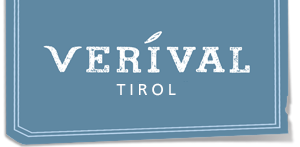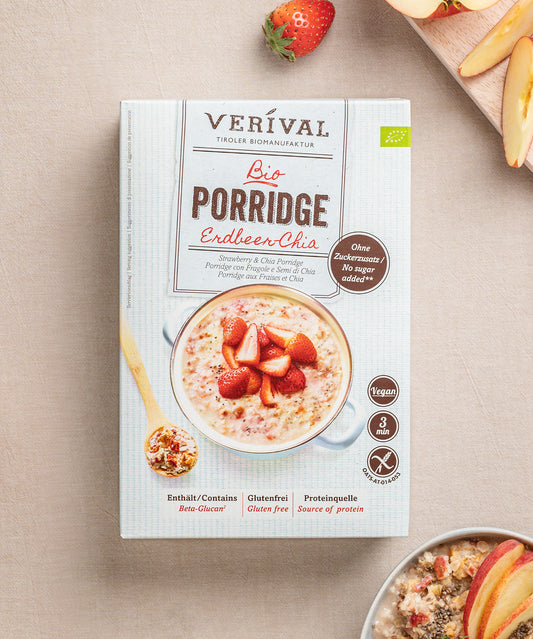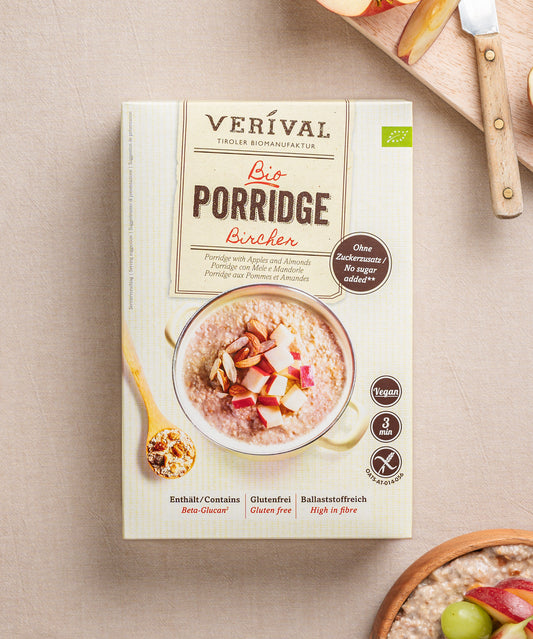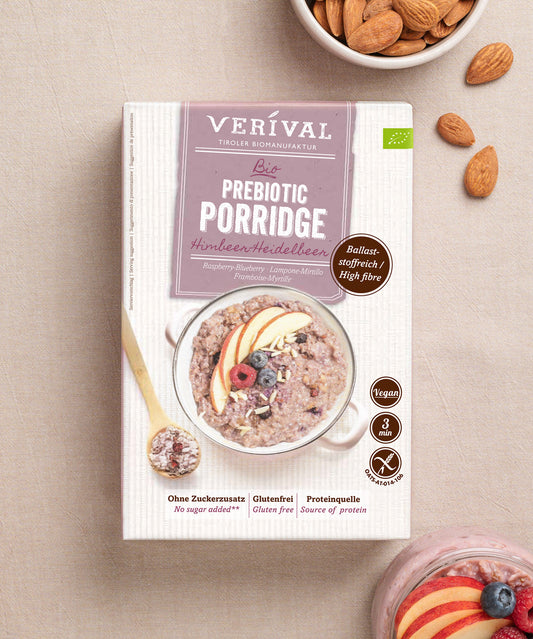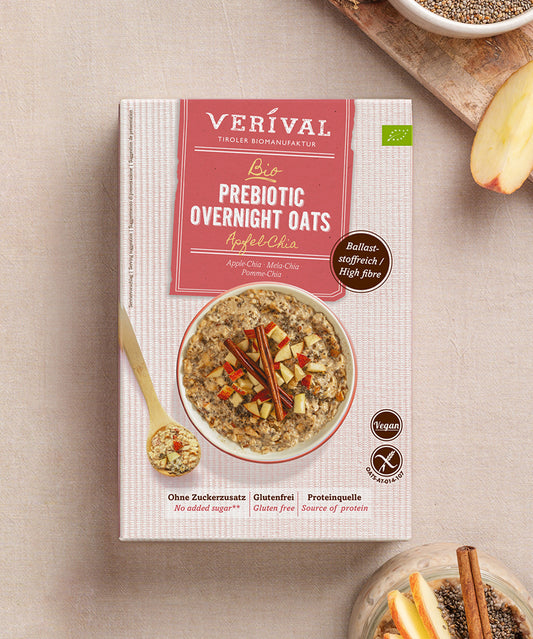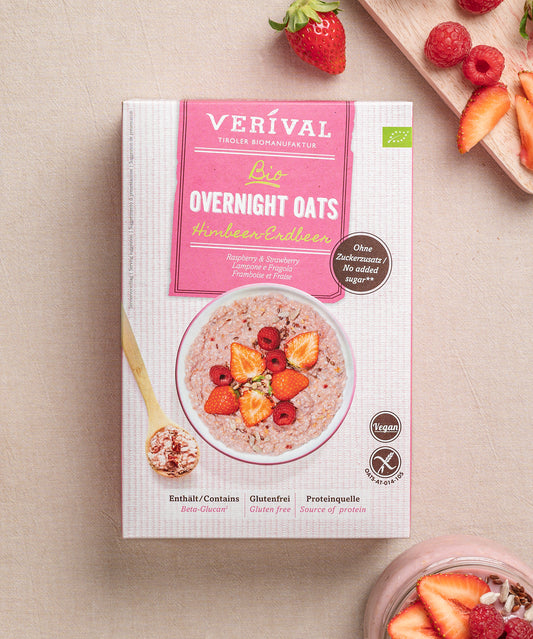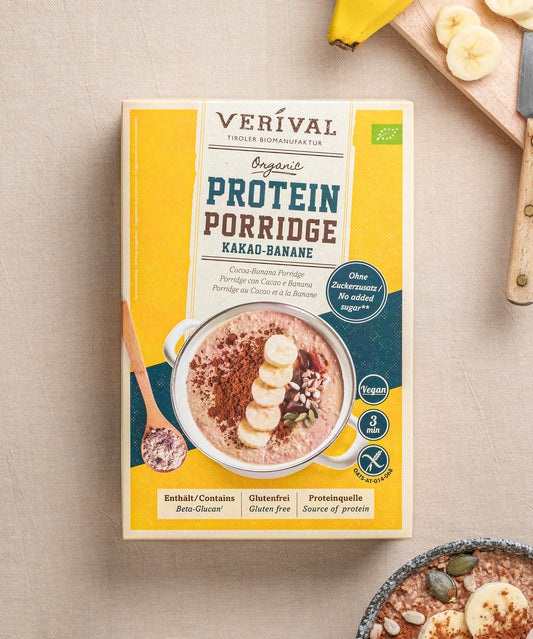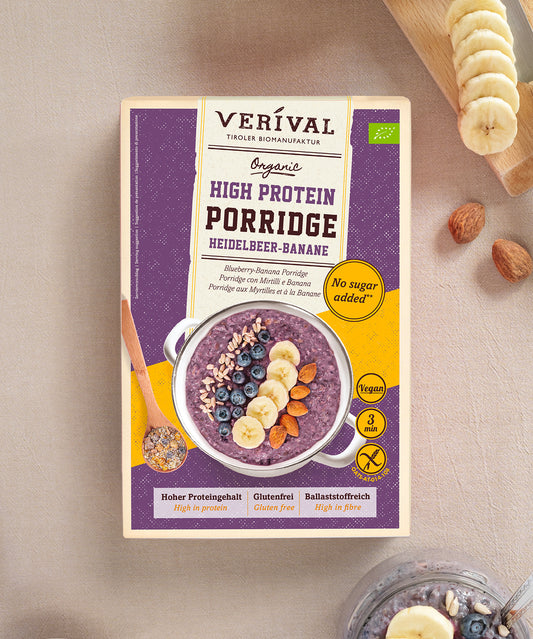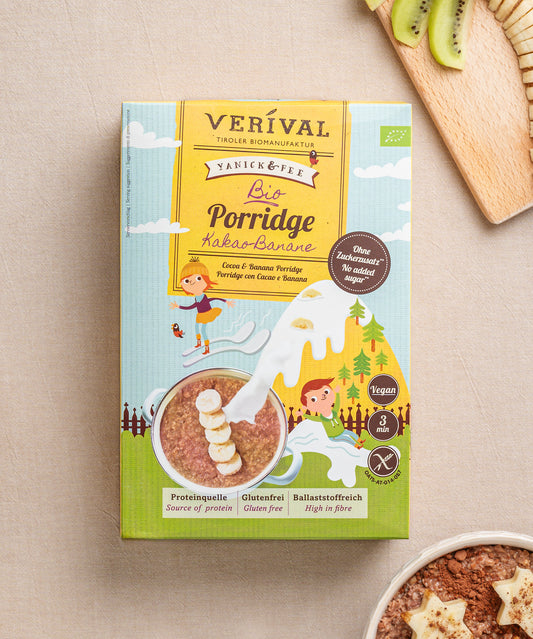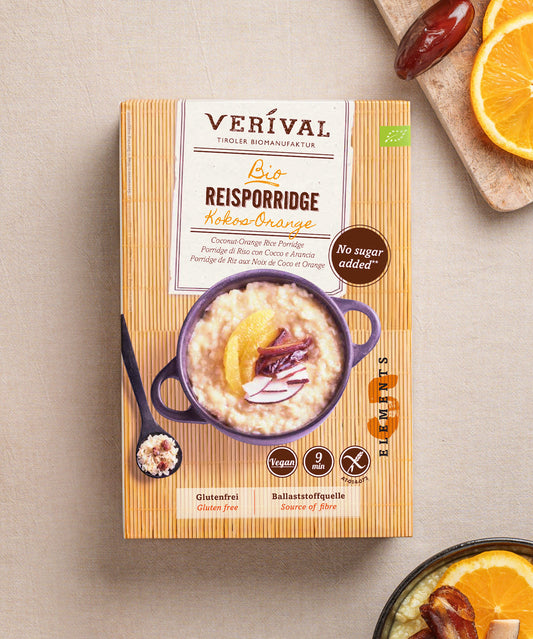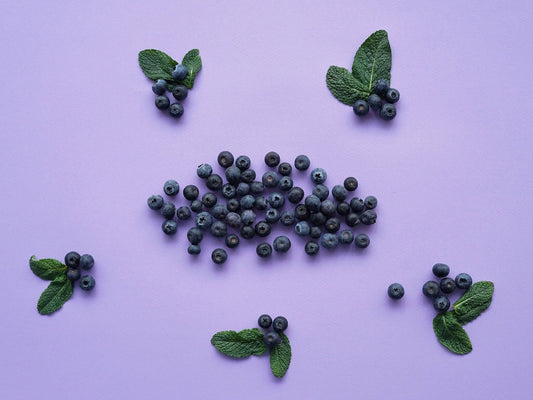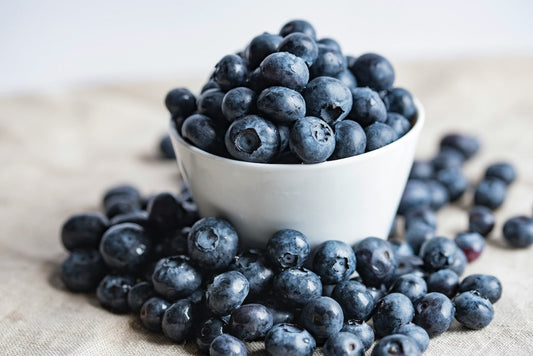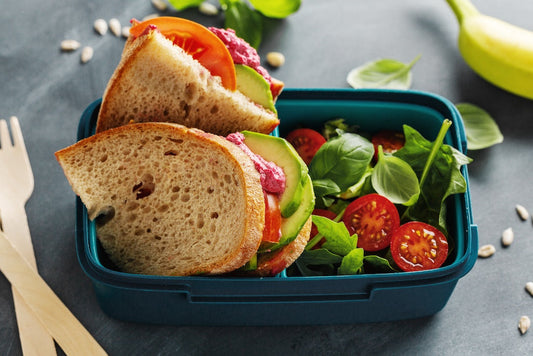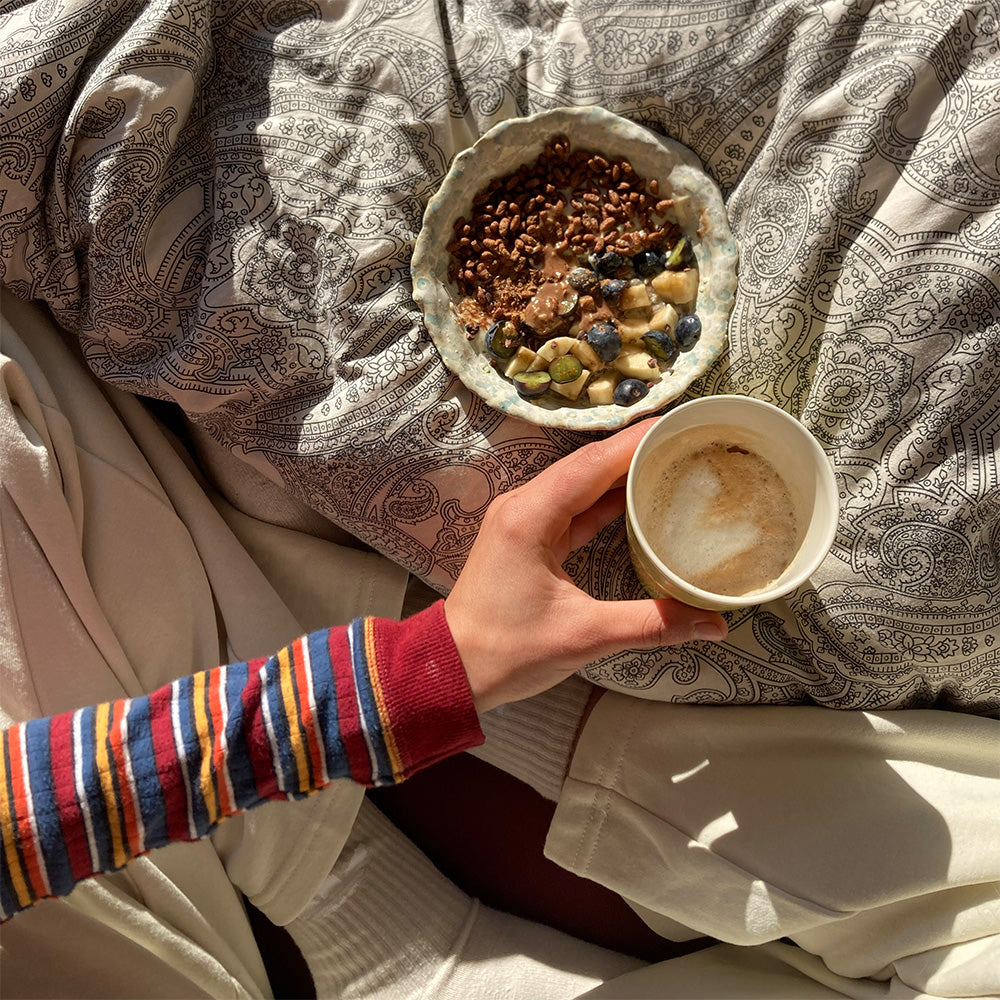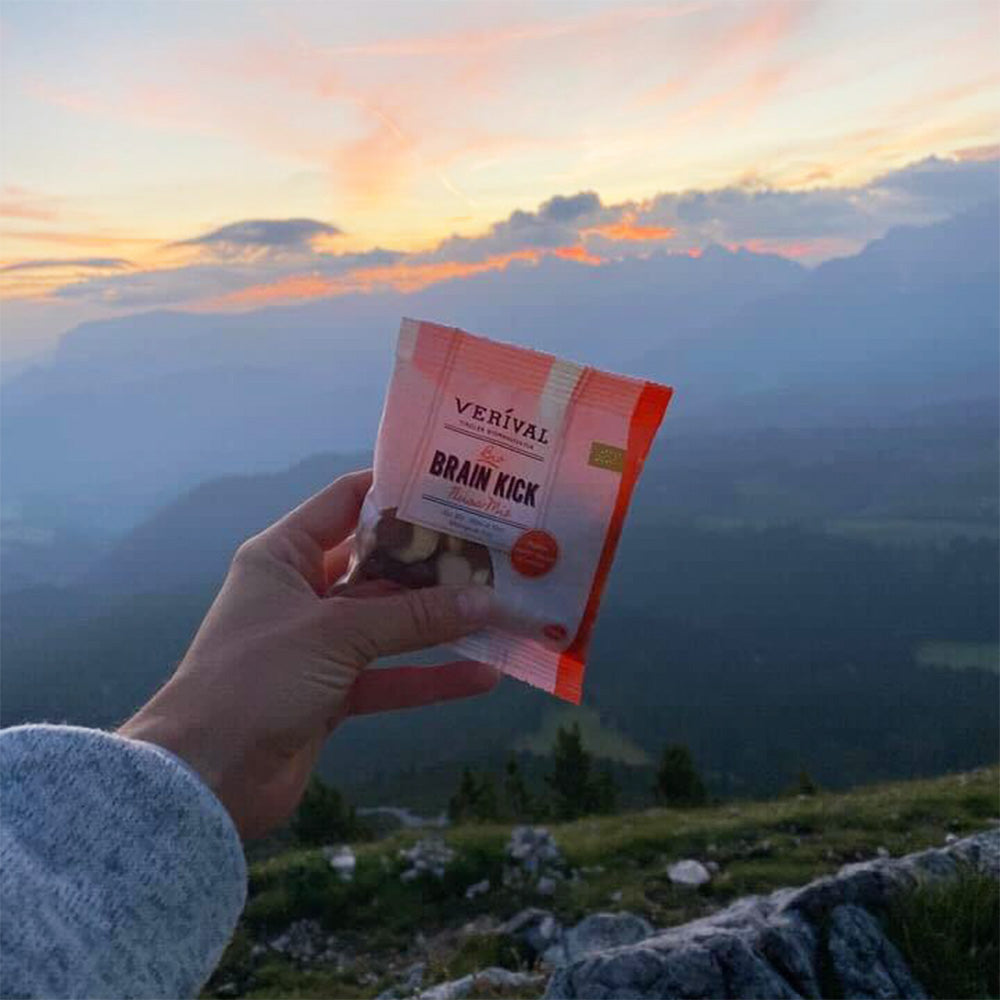More and more people are thinking about gluten and gluten-free eating. This is because gluten intolerance (also called celiac disease or sprue) and gluten sensitivity are no longer uncommon. The symptoms are usually very stressful for those affected, and in many cases it is not clear for a long time that the constant complaints are caused by celiac disease or gluten intolerance.
What happens if you develop a gluten intolerance and what are you allowed to still eat then? How do you actively avoid products containing gluten? And how can you make sure you eat a gluten-free breakfast first thing in the morning?
Discover gluten-free breakfasts!
What is gluten, anyway?
Gluten is a natural protein that is found primarily in wheat and other grains and grain products. That is why gluten – also known as a sticky protein or simply a glue – is found in a great many foods that contain grains in some form – and there are quite a few. Grains that contain gluten include wheat, rye, spelt and barley, among others.
Gluten is so commonly found in a wide variety of foods because it offers a variety of beneficial physiological and technological properties. Gluten acts as a storage protein and carrier for flavorings. It is also a good emulsifier, gelling, binding and stabilizing. For example, gluten is responsible for flour and water combining to form a sticky dough. This is why gluten is also called a glue protein. Due to its versatile properties, gluten is also contained in most ready-made products.
Strictly speaking, gluten is a protein mixture of prolamin and glutelin. Wheat contains the prolamin gliadin and the glutelin glutenin. In rye, the substances are called secalin and secalinin, and in oats avenin and aventin. It all sounds quite complicated. But we don't want to go into too much detail here.
What is coeliac disease?
Coeliac disease is a serious gluten intolerance and intestinal disease that affects the small intestine. The absorption of gluten in the body causes inflammation of the small intestinal mucosa. This inflammation causes the intestinal villi to stick together and die over time. As a result, people with celiac disease suffer from extremely unpleasant symptoms and the body can no longer properly absorb nutrients. The impaired absorption of nutrients can lead to a significant nutritional deficiency.
To prevent and alleviate symptoms of secondary gastrointestinal diseases such as gastric or intestinal cancer or deficiency symptoms, people with celiac disease must eat gluten-free food. This also causes the villi to rebuild and regenerate. However, the disease cannot be cured even with the right diet and will last a lifetime.
Celiac disease is usually diagnosed by a gastroenterologist or internist based on a blood test and/or tissue samples or a small bowel biopsy. Of course, as with many food intolerances, you can also do self-tests (e.g. eat gluten-free for 5 days a week and eat gluten for 2 days, and compare symptoms/well-being) and keep a food diary to determine whether you can tolerate gluten or not. However, this type of test does not provide a very reliable result and should only be seen as a first point of reference.
What are the symptoms of gluten sensitivity or intolerance?
The typical symptoms of gluten sensitivity or intolerance are digestive problems, although the symptoms are also individual and can vary greatly. They range from diarrhea to headaches to skin reactions. But joint or muscle pain is also not uncommon.
In the case of celiac disease, the most severe form of gluten intolerance, symptoms such as iron deficiency, anemia, concentration difficulties and loss of appetite may also occur. If you repeatedly experience bloating or discomfort after eating gluten-containing foods, you may well be affected by an intolerance. But before you start to worry, we recommend that you see a specialist. They can run tests, make a diagnosis and discuss treatment options and a possible change in diet with you. If you discover that you have a gluten sensitivity or intolerance, it is also recommended that you seek professional nutritional advice that explains exactly how eating gluten-free works.
What causes gluten intolerance?
In most cases, hereditary factors lead to gluten intolerance. However, an intolerance can also be caused by a weakened immune system, infections or diet. There are many different forms of intolerance, which differ in the severity of their manifestation. There is wheat allergy, gluten sensitivity and celiac disease. Even though these terms are often used as synonyms, there are major differences between them, such as different symptoms and their intensity.
What exactly is bad about gluten?
For people without intolerance, gluten is not a problem. Although science is currently still faced with the question of whether gluten is generally poorly digested by humans, it should not actually cause any problems for healthy people. For people with intolerance, the effect of gluten is similar to an autoimmune disease. It attacks the lining of the small intestine, causing it to slowly dissolve. As a result of the damaged mucous membranes, vitamins and nutrients can often no longer be properly digested. This can lead to deficiency symptoms in those affected.
Gluten intolerance – what can you eat? Eating gluten-free made easy
If you have been diagnosed with sensitivity or perhaps even celiac disease, you are probably wondering what you can still eat. Don't worry, there's no need to bury your head in the sand. While it was extremely difficult to live with gluten intolerance and adapt your diet just a few years ago, there are now enough alternatives and gluten-free recipes available so you don't have to go without.
And just because you have a gluten intolerance doesn't mean you have to give up grains altogether. There are plenty of gluten-free grains, such as buckwheat, rice, tapioca, quinoa, amaranth, and millet. Of course, you can still eat dairy products, too.
If you are affected, it is important to check the list of ingredients on products when shopping and to make sure that the products are really labeled as gluten-free. This is especially important for goods that you would not expect to contain gluten, such as sausages, ready meals, spice mixtures, sauces, or drinks. It is also possible that the products may have come into contact with other gluten-containing products during processing. So you need to be careful here!
How does a gluten-free diet work?
“How does a gluten-free diet work?” This is a question that probably everyone who discovers that they are gluten intolerant has asked themselves. For many people, the mere mention of gluten-free products sets off alarm bells. Those affected are often afraid that they will have to give up everything that tastes good. But this is a big misconception. Eating gluten-free does not mean tasteless! And certainly not in the morning – having a healthy and gluten-free breakfast is really easier than you might think.
There are now many gluten-free alternatives that taste just like the real thing, if not even better. So don't worry – gluten-free is easier than you might think. It starts with cereal. Just a few years ago, gluten-free was unthinkable. Today, there are delicious alternatives, such as our tasty coconut-apricot muesli or cranberry-cherry muesli.
Which foods contain gluten?
The following table shows you which foods contain gluten:
| FOOD THAT CONTAIN GLUTEN | GLUTEN-FREE FOOD |
| Pizza | Milk |
| Ravioli | Cream & sour cream |
| Sauces | Yoghurt & quark |
| Pasta | Cheese and cream cheese |
| Breadcrumbs | Prawns & Scampi |
| Baked goods | Non-breaded meat |
| Bulgur | Egg |
| Couscous | Fresh vegetables |
| Barley | Potatoes |
| Semolina | Sweet potatoes |
| Oats (low gluten) | Rice & rice noodles |
| Rye | Gluten-free noodles |
| Wheat | Bread made from gluten-free flour |
| Various cakes | Vegetable oils |
| Biscuits | Buckwheat |
| Baking mixes | Millet |
| Malt beverages | Amaranth |
| Beer | Quinoa |
| Wheat flour | Soy |
| Rye flour | Chickpeas & chickpea flour |
| Brewer's yeast | Coconut flour |
| Yeast extract | Almond flour |
| Emmer | Fresh fruit |
| Green spelt | Unrefined and refined sugar |
| Triticale | Jam |
| Ready meals (some) | Honey |
| Cocoa | |
| Nuts | |
| Legumes |
As you can see, there are many, many foods and products that do not contain gluten. So it's not that hard to eat gluten-free.
What is the best way to eat gluten-free foods first thing in the morning?
For many, the battle with gluten begins in the morning. Is muesli gluten-free? When buying your muesli, it's best to make sure that it is labeled as gluten-free. Then you are definitely on the safe side. Milk and yogurt are also generally gluten-free – milk substitutes should always be labeled as such. For example, we offer a wide variety of gluten-free muesli options that will help you start the day full of energy and healthy.
Porridge, which is becoming more and more popular for breakfast, is also ideal for a gluten-free diet. Oats are basically gluten-free. Nevertheless, it is still better for people with coeliac disease to buy oats that are clearly labelled as gluten-free. This is because oats are often grown and processed together with other gluten-containing products, which can lead to “contamination” with gluten. You should also make sure that the porridge does not contain any toppings that could spoil your meal.
How about a delicious strawberry chia porridge or our blueberry apple porridge? A warm breakfast is not only extremely healthy, but also gives you the energy you need to enjoy your day to the full.
Gluten-free porridges from Verival – discover them now
If you fancy a more unusual start to the day, why not try our delicious pancakes with our gluten-free Bircher porridge:
Frequently asked questions
Which foods contain gluten?
Gluten is found in various types of grain - in comparatively large quantities in spelt and wheat, for example. But rye and barley also contain gluten. This also means that any food that contains gluten-containing grains also contains gluten. These include pizza, bread, ravioli and other pasta products. But gluten is also found in many baked goods, snacks, ready meals, sauces and processed foods.
Why should you not eat gluten?
Gluten should or must be avoided if you are gluten intolerant – also known as celiac disease. Those affected cannot properly break down gluten, but suffer from sometimes severe symptoms caused by inflammatory processes in the gut after consuming it. Opinions differ as to whether a gluten-free diet is also advisable for people without gluten intolerance; sometimes this step is said to have no effect on health, sometimes a harmful one.
Is it healthy to eat gluten-free?
So far, there is no consensus in the scientific community as to whether a gluten-free diet is also advisable for people who can tolerate gluten without any problems. However, if you are gluten intolerant, your diet needs to be adjusted accordingly. If you continue to consume gluten, the autoimmune disease will attack the intestinal mucosa and nutrients will no longer be absorbed sufficiently. This can lead to deficiency symptoms.
What should you not eat if you are gluten intolerant?
People who suffer from gluten intolerance must, above all, avoid foods that contain gluten-rich grains (e.g. wheat or spelt). These include various types of pasta, such as bread, pizza or ravioli, but also breadcrumbs and numerous sweets.
Where is the most gluten found?
Large amounts of gluten are found in various types of grain. The highest concentrations are found in spelt and wheat flour, but other types – barley, rye, einkorn, green spelt, and kamut – also contain gluten.
Which oats are gluten-free?
Not all oats available on the market are gluten-free. You should check the label and consider the source of the oats. Some manufacturers offer gluten-free oats in their range, including verival, where you can also find a wide range of gluten-free muesli.
What happens if you stop eating gluten?
While it is not conclusively clear whether a gluten-free diet can have negative consequences for people who are not gluten intolerant, it is essential for people with celiac disease. The symptoms of gluten intolerance (including abdominal pain and diarrhea) subside when gluten-containing foods are avoided. However, this does not happen immediately and can take several weeks.
What should I not eat if I have gluten intolerance?
If you have gluten intolerance, you should ideally avoid all foods that contain gluten. These are mainly products that contain gluten-rich grains (e.g. wheat, spelt or rye), such as various types of pasta, bread, pizza and many sweets.
What can I eat if I have gluten intolerance?
People with gluten intolerance have a wide range of alternative products to choose from to those that they cannot eat due to their condition. These alternatives are made from non-gluten cereals, for example, quinoa, millet, buckwheat or amaranth. These include quinoa, millet, buckwheat and amaranth. Many people with gluten intolerance can also tolerate oats, provided they have been properly grown and processed. It is worth checking the packaging, as it generally is for those with the condition. It is important to make sure that products are labeled as gluten-free, even those that supposedly contain no gluten. Finally, it must be ensured that the food has not come into contact with products containing gluten during the manufacturing or processing. All of the following foods are gluten-free: quinoa, amaranth, corn, rice, millet, soy, wild rice, buckwheat, potatoes, vegetables, fruit, legumes, dairy products, meat, fish, eggs, natural cheeses, tofu, honey, sesame seeds, poppy seeds, flax seeds, nuts and almonds.
What bread can I eat if I have gluten intolerance?
People with gluten intolerance have to avoid all types of bread that are made from gluten-containing grains (e.g. wheat, spelt or rye). However, there are alternatives, such as breads made from millet, buckwheat, amaranth or quinoa.
Does yogurt contain gluten?
In principle, unprocessed yoghurt does not contain gluten. However, as soon as it undergoes various processing steps, it may occasionally come into contact with gluten-containing foods. Therefore, it is advisable for people with gluten intolerance to look for an explicit label on foods such as yoghurt that identifies them as gluten-free.
Does coffee contain gluten?
Coffee beans themselves are gluten-free. However, there is a risk with coffee machines, for example, that the coffee may have come into contact with drinks containing gluten.
How can I recognize gluten-free foods?
Gluten-free foods are labeled with the terms “glutenfrei” or “gluten-free” or with the gluten-free symbol of a crossed-out ear of wheat. This requires safety procedures and multiple controls during production to avoid contamination with gluten-containing foods – thus ensuring that the food is gluten-free.
What is emmer?
Emmer is an ancient grain. It contains gluten, but due to the different composition of the gluten protein, it may be tolerated by sensitive people. However, emmer is not suitable for people with celiac disease. The gluten content of 100 g of emmer flour is about 9 g of gluten.
